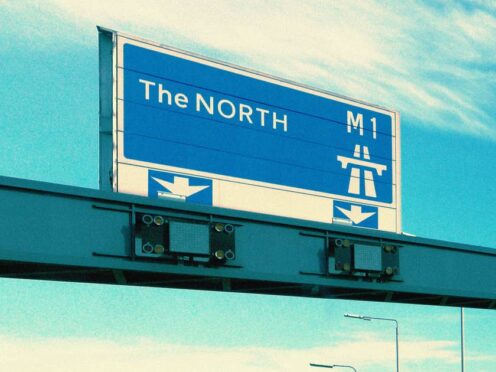
One in every 52 children in Blackpool is in care compared with one in 140 across England, according to new analysis which researchers said exposes “deeply rooted social inequalities” in a north-south divide.
The north of England accounts for just over a quarter (28%) of the child population, but more than a third (36%) of the children in care, the analysis for the Child of the North All-Party Parliamentary Group (APPG) said.
The report’s lead author, Dr Davara Bennett, based at the University of Liverpool, said the findings show “the damage caused by cuts to prevention and failure to address the very real problem of child poverty in the North”.
The authors said that in Blackpool, in the North West, one in every 52 children is in care and in Hartlepool, in the North East, the figure is one in 63.
This compared with one in every 278 for Hertfordshire in the east of England and one in every 256 for Buckinghamshire in the South East of the country, they said.
The higher rates of children entering care are estimated to have cost the North at least £25 billion more in the past four years, the report said.
The report was researched and funded by Health Equity North – an organisation which said it is focused on finding solutions to public health problems and health inequalities across the north of England, and used existing data including official statistics and academic studies.
The analysis suggested a rise in child poverty between 2015 and 2020 “led to over 10,000 additional children entering care in England” and that the “north-south divide in overall care rates is partly explained by widening inequalities in children entering care since 2010”.
A rise in the number of children’s homes between 2020 and 2023 “disproportionately affected” the north of England, according to the report, with some 1,176 children’s homes located there, and just 1,704 in the rest of the country.
It said the North West alone accounts for more than a quarter of children’s homes and close to a quarter of children’s home places.
This greater provision in the North “comes at an economic cost”, the researchers said, adding that children living in care homes generally need high levels of support from health, welfare, education, justice, and children’s services.
The report stated: “Decades of under-investment in the North have hollowed out preventative services, increased rates of children in care and undermined foster care provision, leaving local authorities at the mercy of the private residential care providers.”
It also said the location of children’s homes “compounds challenges in accessing quality education for children in care” with homes often built where housing costs are low, and “a correlation between property prices and school quality”.
The report added: “This means children in care are more likely to live in economically deprived areas and attend lower quality schools.”
The report said lifetime social costs per child in care are £1.2 million, which is said to be around double that of a child who needs a social worker but does not enter a care placement.
The researchers said given this cost, if the north of England had experienced the same rates of children entering care as the South between 2019 and 2023, “it would have saved at least £25 billion”.

Dr Bennett said: “Our report has exposed the deeply rooted social inequalities reflected in, and exacerbated by, the child welfare system.
“These need to be tackled head-on by policymakers. Local authorities are trapped in a cycle of ever-greater spend on children in care, at the expense of investment in effective support for families in need.
“The evidence shows the damage caused by cuts to prevention and failure to address the very real problem of child poverty in the North.”
In light of the analysis, APPG members and the report authors have made a number of recommendations including policies to reduce child poverty such as scrapping the two-child limit and benefit cap, as well as more investment in prevention strategies such as targeting additional investment in the North.
The report also called for more support for older children and those leaving care as well as for more research to be done monitoring health, housing, education, and employment outcomes of children in care.
A spokesperson for the Department for Education said: “Every child deserves to live in a safe and stable home and we are committed to helping children and families overcome multiple and complex needs at an early stage, so they can stay together and thrive.
“Early intervention is at the core of our ambitious children’s social care reforms – including a £45 million investment in pilot areas across the UK to help us shape a future system where we provide families with the right support at the right time, delivered by the right people.
“For those leaving care, we are investing £250 million over three years to help them succeed – providing housing, access to education, employment and training.”

Enjoy the convenience of having The Sunday Post delivered as a digital ePaper straight to your smartphone, tablet or computer.
Subscribe for only £5.49 a month and enjoy all the benefits of the printed paper as a digital replica.
Subscribe